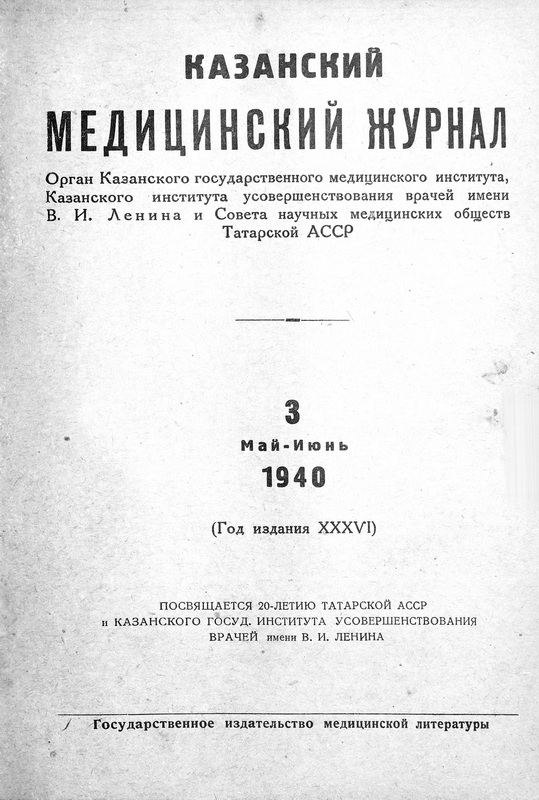Vol 36, No 3 (1940)
- Year: 1940
- Published: 13.03.1940
- Articles: 19
- URL: https://kazanmedjournal.ru/kazanmedj/issue/view/3301
Full Issue
 3-6
3-6


 7-14
7-14


 14-20
14-20


 20-27
20-27


 28-34
28-34


 35-38
35-38


 39-46
39-46


 46-53
46-53


 53-60
53-60


 61-65
61-65


 65-70
65-70


Quinoline No. 31 in the treatment of malaria in children
Abstract
In 1931, the Central Tropical Institute first began testing quinoline-type antimalarial drugs, among which plasmacide is the most widespread. Plasmacid contains 30% quinoline base. Over the past 8-9 years, many clinical observations have been published regarding the action of plasmacid.
 71-77
71-77


Leukocyte picture in malaria
Abstract
For clinical purposes in the study of the leukocyte picture (LK), it is important to take into account that "the blood picture is not a specific symptom of certain diseases, but is a transient pathological change in the equilibrium state of the blood system" (Schilling).
 77-82
77-82


 83-85
83-85


 86-93
86-93


 94-96
94-96


Peat mud in the treatment of gynecological diseases
Abstract
The feasibility of using mud therapy for gynecological patients in the form of mud pants in combination with vaginal tampons at resorts of all-Union importance has been proven with sufficient clarity, but it is not possible to provide resort mud therapy to all women suffering from gynecological inflammatory diseases and needing this type of treatment.
 97-100
97-100


 101-102
101-102


 102-104
102-104











